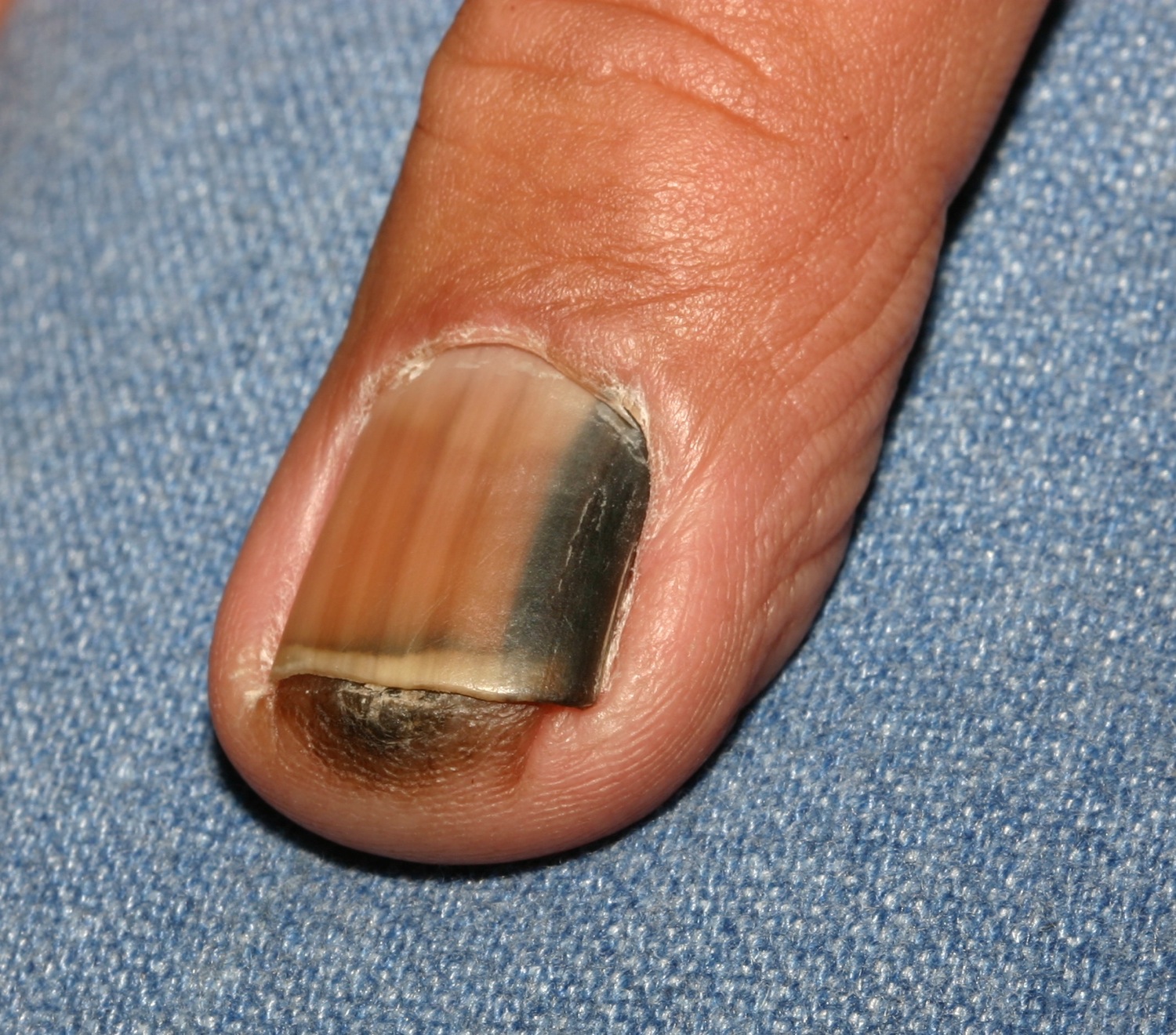 Single longitudinal melanonychia. This narrow lesion is probably benign and careful observation is appropriate.
Single longitudinal melanonychia. This narrow lesion is probably benign and careful observation is appropriate.
 Single longitudinal melanonychia. This narrow lesion is probably benign and careful observation is appropriate.
Single longitudinal melanonychia. This narrow lesion is probably benign and careful observation is appropriate.
Longitudinal Melanonychia (LM) is a longitudinal pigmented streak of the nail caused by melanin in the nail plate.
A longitudinal brown streak of the nail is seen. The origin is the base of the nail (proximal nail fold) and the width of the pigmentation is uniform. (Rarely, with rapidly growing lesions, the width may be progressively wider proximally, giving what is called the "triangular sign".) This reliable and distinct pattern helps distinguish LM from subungual hematoma or darkening from onychomycosis. Those patterns of darkening are random, haphazard and often not contiguous with the proximal nail fold.
Pigmentation of the proximal or lateral nail folds, and hyponychium (Hutchinson's sign) can be a sign of melanoma but is not uncommon in benign LM, especially in children. Complete darkening of the nail is called total melanonychia.
Nail clipping with special stains can be used to confirm that the pigment is melanin.

Multiple LM tend to be benign, as shown here. But just as with nevi and the "ugly duckling sign", if one lesion of multiple LM stands out from all the others (darker, wider, different shades) biopsy should be considered.

A more worrisome LM as it is wider and with multiple shades.

The spread of pigment to the fingertip is a clear sign of melanoma.

Biopsy of the base of a new dark LM. Biopsy showed melanoma in situ.
Homepage | Who is Dr. White? | Privacy Policy | FAQs | Use of Images | Contact Dr. White